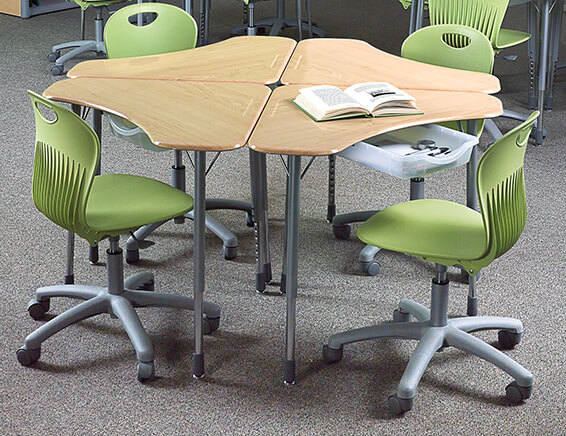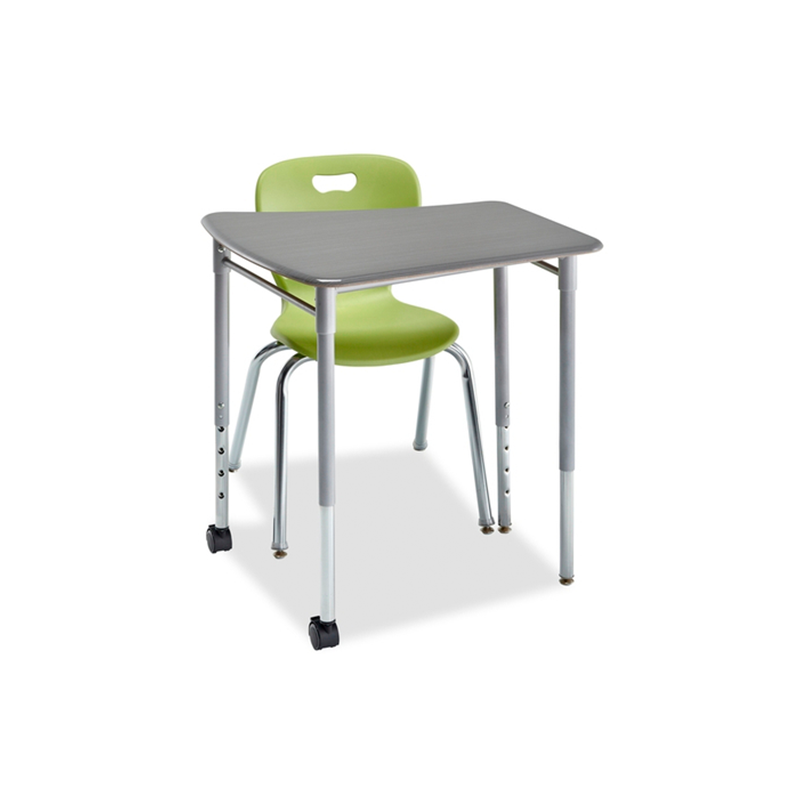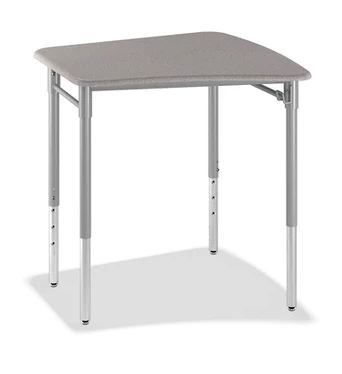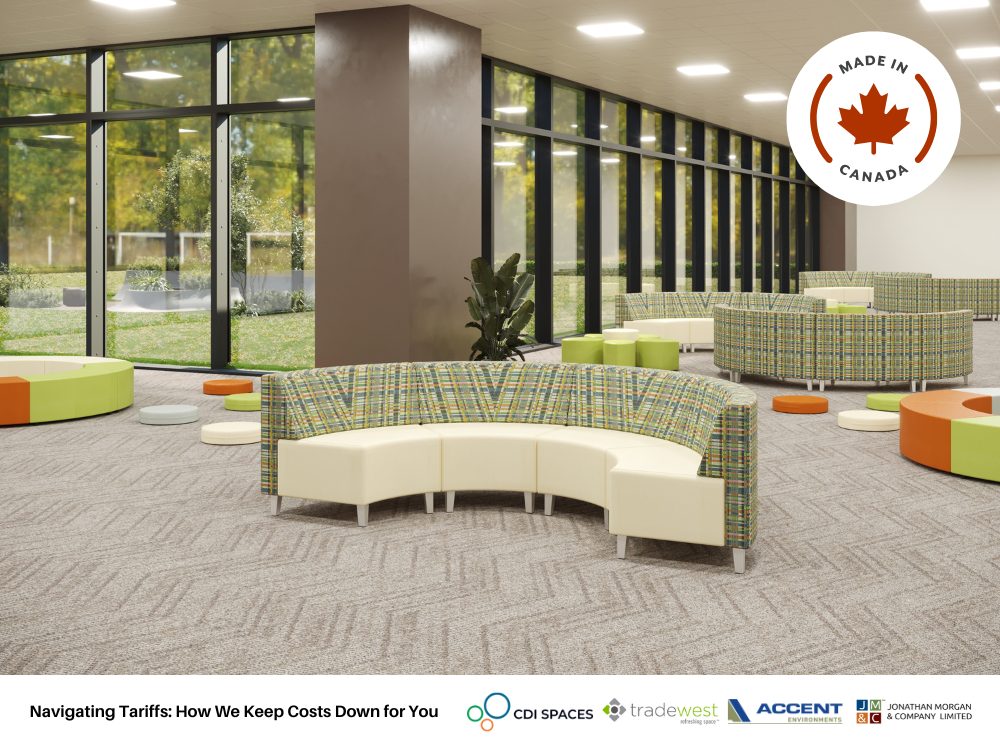Blog

When you think of a traditional classroom, what comes to mind? Rows of rigid desks, students sitting still, and a teacher standing at the front? While this setup has been the norm for decades, it doesn’t always align with the way students learn best. Enter flow desks—a modern and flexible approach to classroom design that’s turning these traditional setups on their head.
Flow desks are becoming more popular in schools as educators and administrators recognize the benefits of more dynamic, student-centered spaces. But what exactly are flow desks, and how are they changing the game in education? In this blog post, we’ll explore what makes flow desks unique, the many benefits they bring to students and teachers, and how they’re shaping the future of classroom design.
What are Flow Desks
Flow desks are designed to offer flexibility and movement in the classroom. Unlike traditional desks that are static and often arranged in fixed rows, flow desks allow students to easily rearrange their seating based on the task at hand. They typically have wheels or lightweight structures, making them easy to move, and their shapes are often modular, allowing desks to fit together in various configurations.
This mobility and adaptability are what make flow desks stand out. Instead of sitting at the same desk all day, students can adjust their seating to suit different learning activities—whether that’s working solo, collaborating in small groups, or participating in larger discussions. Flow desks create a classroom environment that can shift and change based on the needs of the moment.

The Benefits of Flow Desks in Schools
Flow desks are more than just trendy furniture—they offer real benefits for both students and teachers. Let’s break down some of the key advantages.



1. Enhancing Student Engagement
One of the biggest challenges in education is keeping students engaged throughout the school day. Research shows that students tend to focus better when they’re given the freedom to move and change their learning environment. Flow desks make it easy for students to shift between different seating arrangements, which helps break the monotony of sitting in one spot for hours on end.
This movement also allows for different types of learning activities. For example, teachers can quickly rearrange the classroom for group projects, pair work, or a class discussion. The flexibility of flow desks keeps students physically and mentally engaged, encouraging them to stay active participants in their learning.
2. Supporting Collaboration
Collaboration is a critical skill for students to develop, and flow desks make it easier to foster teamwork in the classroom. When desks can be moved around and grouped together, it creates a natural environment for students to collaborate with their peers. Whether they’re working on a science project, brainstorming ideas for an assignment, or discussing a book they’ve read, students can easily form groups without the hassle of dragging heavy desks around.
Flow desks can be arranged in clusters, circles, or other configurations that encourage conversation and interaction. This setup is especially beneficial in subjects like language arts, social studies, and science, where discussion and peer-to-peer learning are key. By making collaboration more accessible, flow desks help students build important communication and teamwork skills that will serve them well beyond the classroom.
3. Improving Classroom Flexibility
Teachers are often tasked with juggling multiple teaching styles and lesson formats within a single school day. With flow desks, they have the flexibility to switch between different types of instruction seamlessly. Want to hold a class discussion in the morning, followed by independent study time in the afternoon? Flow desks can be easily reconfigured to suit both activities without interrupting the flow of the day.
This adaptability is particularly useful in classrooms that use differentiated instruction—a teaching method that tailors learning experiences to individual students’ needs. Some students might need one-on-one instruction while others work in groups, and flow desks allow teachers to create these small, personalized spaces within the classroom. This level of flexibility helps ensure that all students get the support they need to succeed.
4. Promoting Movement and Reducing Restlessness
Sitting still for long periods can be tough for students, especially younger children or those with attention challenges like ADHD. Flow desks allow for more movement, which helps students release pent-up energy without being disruptive. Whether they’re standing up to move their desk or shifting seats for a group project, students are given regular opportunities to stretch and move around.
This freedom of movement can improve focus and reduce restlessness. Studies have shown that students who are allowed to move during class tend to perform better on tasks that require attention and concentration. Flow desks offer an easy way to incorporate movement into the school day, helping students stay focused and engaged in their learning.
5. Creating a More Inclusive Classroom
Every student has different learning needs, and flow desks are a great way to create a more inclusive classroom environment. For students with sensory processing issues or physical disabilities, traditional desks can sometimes be a barrier to learning. Flow desks, with their flexibility and ease of movement, allow teachers to adjust the classroom layout to accommodate these students’ needs.
For example, a student who needs more space or prefers to sit near the front of the room can easily find a desk that works for them. Similarly, flow desks can be arranged to create quiet spaces for students who may need a break from the noise and activity of the classroom. This flexibility helps ensure that all students, regardless of their needs, feel comfortable and supported in their learning environment.
The Future of Classroom Design: Why Flow Desks Are Here to Stay
As education evolves, so too must the environments in which students learn. The traditional, static classroom design no longer fits the needs of modern students, who thrive in spaces that are flexible, collaborative, and responsive to different learning styles. Flow desks are a key part of this shift, offering a more dynamic and adaptable approach to classroom design.
Many schools are already embracing flow desks as part of their efforts to create 21st-century learning environments. For example, schools that focus on project-based learning or STEM education often prioritize flexible, open spaces where students can move freely between different types of activities. Flow desks fit perfectly into these environments, allowing for quick transitions between lectures, group work, and hands-on projects.
In fact, a study by the Harvard Graduate School of Education found that flexible classroom layouts, like those made possible with flow desks, can significantly improve student engagement and academic outcomes. The study highlighted that students in classrooms with flexible seating arrangements were more likely to collaborate with their peers and participate in discussions, leading to a deeper understanding of the material.
As more schools adopt flexible seating and flow desks, we’re likely to see continued improvements in student focus, engagement, and collaboration. These desks are not just a trend—they represent a shift toward more student-centered, adaptable learning environments that can meet the needs of all learners.
Practical Tips for Implementing Flow Desks in Your School
If you’re an educator or administrator considering flow desks for your school, here are a few tips to make the transition smooth and successful:
- Start Small: You don’t need to completely redesign your classroom overnight. Start by adding a few flow desks or flexible seating options and see how your students respond.
- Involve Students: Let students have a say in how the classroom is arranged. Giving them ownership over their learning environment can increase their engagement and enthusiasm for school.
- Observe and Adapt: Pay attention to how students use the flow desks and be open to rearranging the classroom based on their needs. The beauty of flow desks is that they’re easy to move and adjust, so don’t be afraid to experiment with different layouts.
- Educate Parents and Staff: Share the benefits of flow desks with parents and other staff members. It’s important for everyone to understand that these desks aren’t just about aesthetics—they’re a tool for improving learning outcomes.

Flow desks are revolutionizing the way we think about classroom design. By offering flexibility, promoting movement, and encouraging collaboration, these desks are helping students stay focused, engaged, and excited about learning. As more schools embrace this modern approach to classroom layout, we can expect to see even greater improvements in student performance and well-being.
If you’re looking for a way to transform your classroom into a more dynamic, student-centered space, flow desks might be the perfect solution. They’re not just a trend—they’re the future of education.







